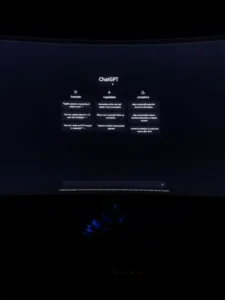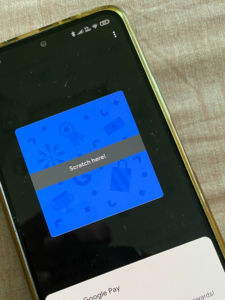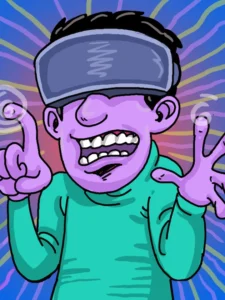And we thought that’s it. It already had the business catalogue, interactive services, spammers, and payments. What else can you add to a one-to-one messaging app? Right? But then comes another feature – Channels – and that’s it. The old and simple WhatsApp died a few weeks ago to resurrect into another super app.
Times are changing. The internet is changing.
Flashback
While growing up in the 90s and 2000s, we had naive and cute memories of the internet. We used email accounts for mailing (only! Strange, right?). We had Windows Media Player and Winamp to play our favourite songs. We edited a couple of photos on Picasa. We wrote phone numbers and addresses on physical diaries, used landlines to call and made efforts to actually meet people.
Mobile phones revolutionised everything and we started merging different physical activities into a device or software. I guess, that became the sole objective of technological development.
Then came social media and fast internet. My first social media journey began on ‘Orkut’. I remember talking to many school friends on the ‘scrapbook’ and it was difficult to interact and browse, in general, because of the dial-up internet connections. Broadband and Facebook entered around the same time in our lives. 3G and 4G made it better.
5G, 6G, metaverse, decentralised finance, NFTs, blockchains and AI are set to change the world. Well, nobody knows what’s going to happen. So, let us avoid talking about that. Instead, let us connect some dots on what is happening today.
Social Media Portfolio
What does your social media portfolio look like? For any average person, the social media portfolio used to be something like this –
- Facebook: for friends, family and friends of friends – to wish on birthdays, life events, occasional sharing of news and opinions, etc., largely through texts and images.
- Instagram: for close friends – to update on life events, but through images.
- Twitter: a microblogging platform to follow news and celebrities.
- LinkedIn: for professional circle – to post on work-related matters, job announcements and finding jobs.
- WhatsApp: to communicate with your friends, colleagues and family.
- YouTube: a personal space to watch videos.
- Amazon: a shopping app (I know it’s not social media, but I will talk about it later)

Social Media Same-Pinch
The purpose of social media has changed beyond one’s imagination. Facebook turned into a political and hate machine and so are the WhatsApp groups. Many people (at least in my generation) have stopped browsing Facebook and turned towards Instagram and LinkedIn. Youth (including me) have decreased their interactions on WhatsApp groups and many even ignore the DMs. WhatsApp has become like our messaging or email app – filled with unwanted ads and unread messages.
Earlier, YouTube was the only video-only place, Instagram equated to beautiful holiday pictures and LinkedIn to find jobs.
Instagram reels became popular after the TikTok ban and those became available on your Facebook account as well. But Instagram has not restricted itself to short-form videos. One can play long-form videos and start live broadcasting similar to YouTube. YouTube wanted to stay relevant in the short-form video format and introduced ‘Shorts’. But it also pushed the ‘posts’ feature to interact within a community. Meta, on the other hand, came up with ‘Threads’ (that became an instant hit and an instant flop) that worked alongside Instagram to compete with Twitter (now X). That means we can see images, short videos, long-form videos, and text as well as live broadcasts on YouTube, Facebook and Instagram/Threads.
Before WhatsApp rolled out its ‘channels’ feature, Instagram introduced it and stepped ahead of YouTube a bit.
Twitter has been more or less the same, at least, for users. It was a hate machine like Facebook and continues to be so. However, if you use Twitter to get news and some updates and not interact with people on it, then some of Musk’s interventions should not matter to you much. Musk has announced that Twitter (sorry, ‘X’ – yet to familiarise with this new name) will have a calling feature soon, similar to Facebook Messenger and Instagram. He also announced a feature called ‘Hirings’ that will help in hiring people through Twitter, therefore, a direct competition to LinkedIn.
LinkedIn, on the other hand, became a chic version of Facebook. It now promotes images and videos rather than plain text. It has become a place where people BS every day on productivity and post unrelated (mostly senseless) images and texts. Political conversations too are entering LinkedIn. Yet that has become my go-to platform these days.
Competing for a Second
Going beyond the typical social media platforms, many others are joining a similar race, although not a direct competition. For example, Amazon. It started ‘Mini TV’ which hosts short videos – longer than reels but shorter than movies or web series. That feature has been integrated into the shopping app itself. If you remember, even Zomato started ‘Zomato Originals’, a video streaming service, just before the Covid. It became a hit during Covid, but now it has been shelved. Similarly, MakeMyTrip has a community feature, where you can add photos and videos of your travel and interact with people, who can ask questions or share travel stories.
Earlier, one could not have said that Twitter has a direct competition to Instagram or LinkedIn. But now, such distinctions have disappeared from every platform. Therefore, I believe, every social media platform is becoming similar in nature, where no one wants itself to be a niche. Everyone wants to creep into others’ territory and is trying to get attention as much as possible. All the apps want us to be engaged on their app for everything – be it entertainment, information, communication, travel plans or job search.
I don’t know if I should be happy or sad about it. I am definitely sad about spam and I feel the apps are getting too complicated.
Commerce Going Super Too
But that does not stop at social media. Conglomerates have launched super apps, where we can buy all their products through one app. Tata Neu, My Jio and PayTM are popular super apps in India. South East Asia has Grab and Gojek. China has AliPay and WeChat. Omni in Central America, Rappi in Latin America, Revolut in the UK and Careem in the Middle East are some popular super apps examples worldwide.
Superapps are one of the ways corporates consolidate their businesses and get in touch with their customers. Getting away with middlemen has become one of the main objectives of conglomerates, in this ‘data-is-the-new-oil’ world. Five to six years ago, companies had to rely on external market research to understand what their customers or potential customers were searching online. But now, with super apps, this process has got a tad simpler. However, most of the superapps are yet at a nascent stage and thus they cannot rely on their app alone for such information. But we can imagine the gains coming out from a scenario where people buy their products from their app rather than third-party apps or offline.
For customers, super apps help us save a lot of phone memory. This apart, I am in for such a concept as I don’t have to remember multiple passwords for multiple apps. There are multiple use cases but one cannot ignore cybersecurity-related risks.
Moreover, in India, we are seeing industry-wide consolidation through mergers and acquisitions. Bigger players are venturing out into different sectors by acquiring existing companies. This helps them in creating super apps and offering more services.
These companies tie up with banks and offer credit cards. Tata Neu has partnered with HDFC Bank, PayTM with SBI and HDFC and Amazon with ICICI. With such partnerships, credit card rewards and in-app loyalty points, they are trying to win and retain customers.
The super app ecosystem has grown in emerging markets more than the advanced economies of the West. The main reason behind it is the stricter anti-trust and data protection laws in the Global North.
However, the concept of super apps hasn’t really kicked off or a supersuccess, per se. But we might see companies going that route until they feel that it is an additional burden.
How the Future Be Like?
Internet companies are going through a disruptive wave once more. This time, it is not trying to bring you from the offline world to the online one. They are competing amongst themselves for every second of our attention. This means the Netflix app is competing not only with Amazon Prime but also, with Instagram, YouTube, Amazon Shopping, X, Tata Neu and even Kindle.
You should be intrigued by seeing some trends like entrepreneurs becoming influencers and influencers becoming entrepreneurs. This is all happening to get every second of your attention.
I believe there’s going to be a massive disruption. There are three possible ways it may lead to.
One, the market consolidates even further. The internet, in the context of the examples discussed above, becomes oligopolistic, a market where there are only a few sellers selling products and services. That means, (even) lesser apps or platforms have control over most of our daily activities. It also means not having any say on prices or privacy. The second way – the bubble bursts (or we burst due to overuse of these apps) and we have an altogether different system with a tinge of nostalgia like text messaging. But I believe, the third way is more consumer-friendly, which is going the ‘ONDC way’. A couple of months ago, I wrote about ONDC (read that article here) and how that can have the potential to revolutionise commerce in this age. At the end of that article, I mentioned that it would be wonderful if social media followed such a path. That might lead to a better outcome.
What do you feel?
Let us park the thought of the future aside for now. I would like to know your thoughts about the current scenario. Are you liking it the way it is today?
– Swapnil Karkare










